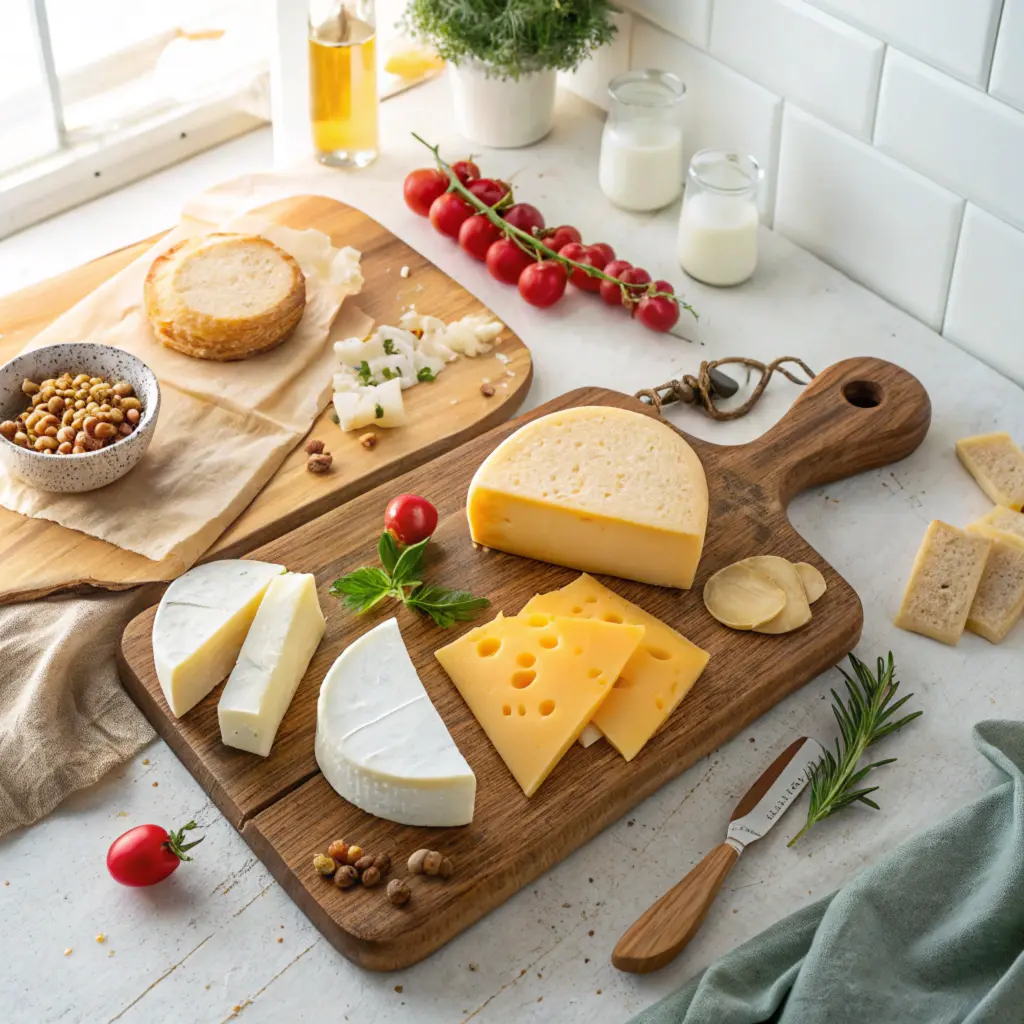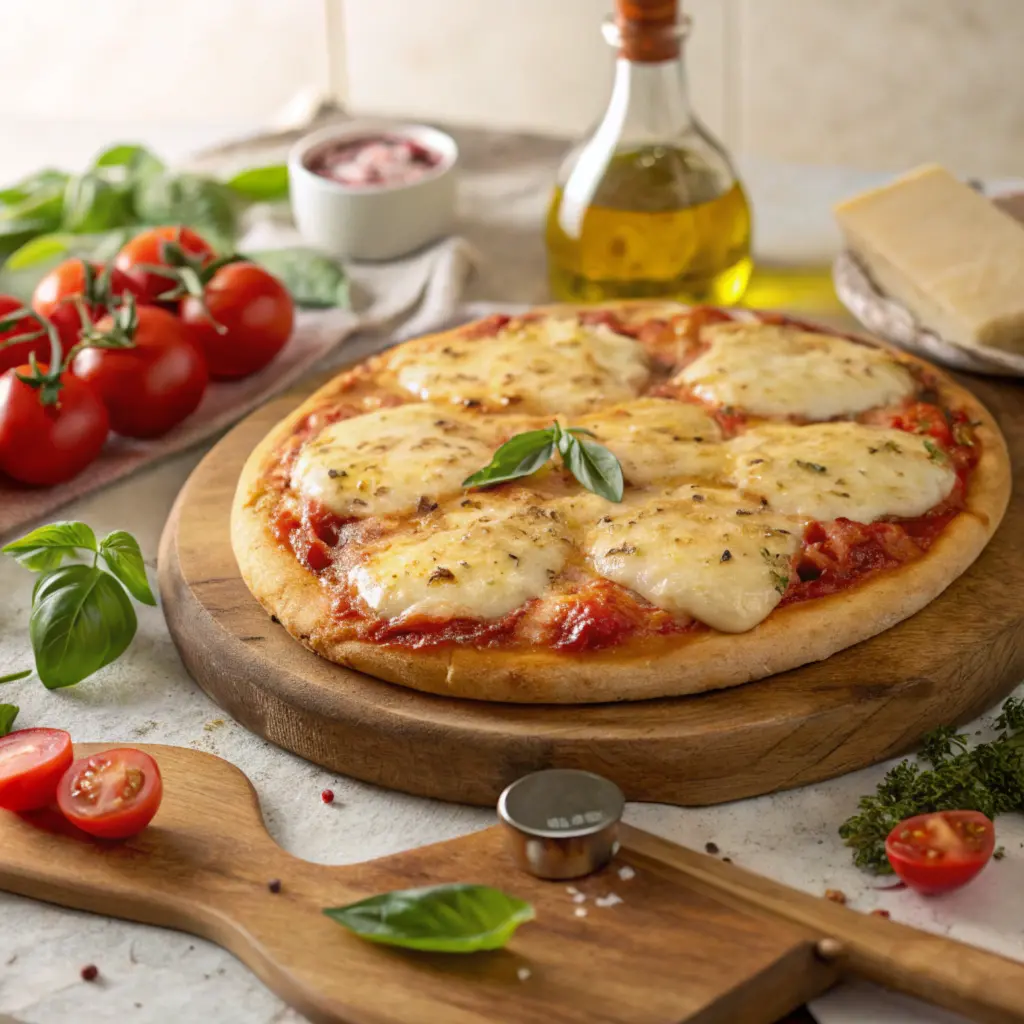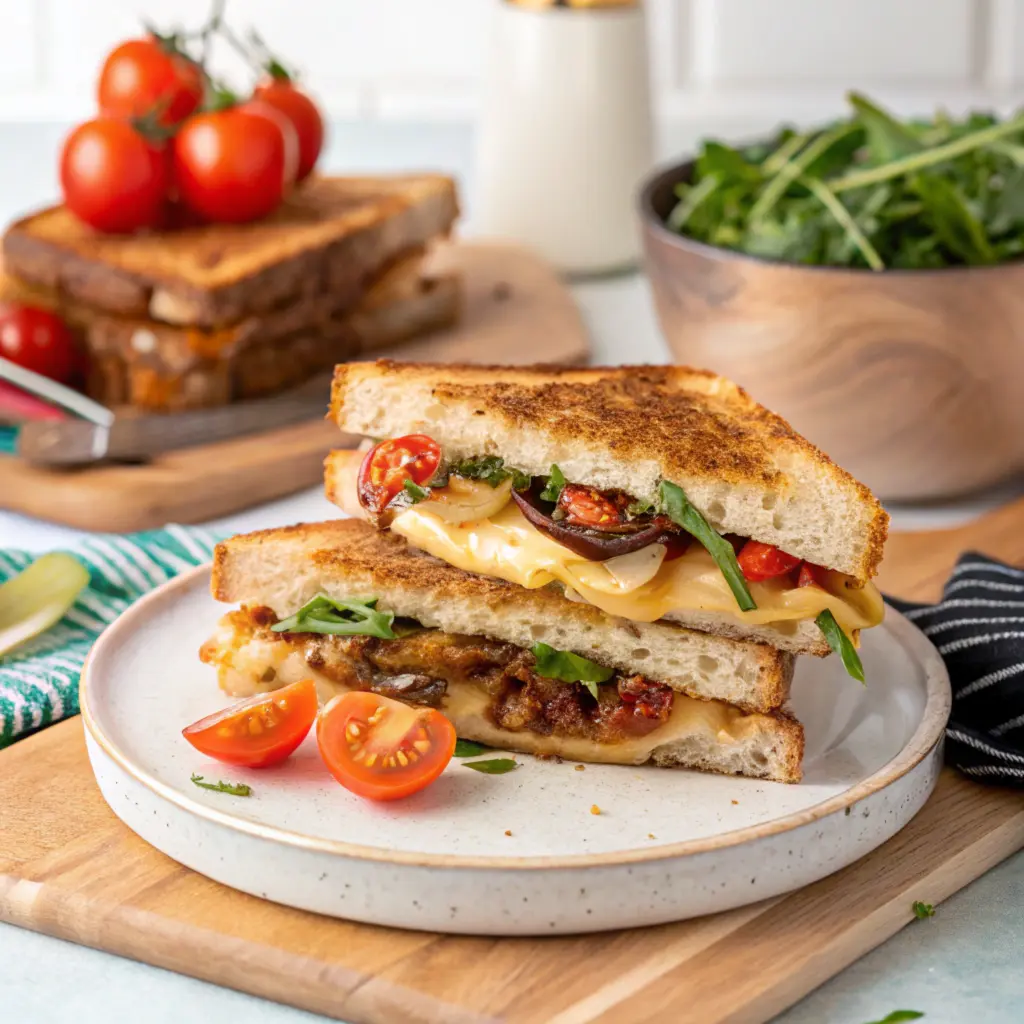Discover which cheese is best for pizza and sandwich with this comprehensive guide! Explore top cheese options, pairing tips, and expert advice to elevate every bite.
Introduction
Choosing the right cheese can transform an ordinary meal into something unforgettable. Indeed, a simple slice of bread or pizza dough can come alive with creamy, melty goodness. Which cheese is best for pizza and sandwich? This question arises because cheese delivers so much flavor, texture, and complexity. Basically, the perfect cheese enhances every bite and brings balance to your toppings.
However, not all cheeses behave the same way. Comparatively, a sharp aged cheddar offers a different experience than a fresh mozzarella. Especially when heated, cheese can stretch, bubble, and brown in unique ways. Ultimately, your choices depend on personal taste, dietary needs, and cooking techniques.
In this article, we will examine various cheese options to help you decide wisely. We will cover familiar classics, artisanal selections, pairing strategies, and healthier alternatives. Furthermore, we will delve into techniques for melting and serving cheese properly. Altogether, by the end, you will know exactly how to pick and enjoy the best cheeses for your next pizza or sandwich creation.
Which cheese is best for pizza and sandwich? Exploring Flavor and Melt
When determining which cheese is best for pizza and sandwich? we must first consider the flavor profile and meltability. Indeed, flavor sets the tone of your meal, while meltability ensures a pleasing mouthfeel. Undoubtedly, a cheese that melts beautifully tends to enhance texture, making each bite more indulgent.
Which cheese is best for pizza and sandwich? The Importance Of Melt
Initially, think about what happens when cheese meets heat. Mozzarella, for example, melts into silky strands that delight your palate. Comparatively, a hard cheese like Parmesan may not melt as smoothly, producing a firmer chew. Consequently, the way cheese melts can influence whether it’s better suited for a gooey grilled cheese sandwich or a crisp pizza topping. Basically, if you love that stringy pull, opt for a cheese known for superior melt, such as mozzarella or fontina.
Matching Cheese Profiles To Your Palate
Another key factor is taste. Consequently, some individuals prefer mild cheeses that let toppings shine, while others crave strong flavors. For example, a smoky provolone or a tangy goat cheese can bring a more distinctive note. Equally, mild varieties like young mozzarella or creamy Havarti can provide a neutral canvas for your favorite sauce and ingredients.
Considering Regional Cheese Varieties
Cheese hails from all around the world, each region offering unique characteristics. Italian mozzarella suits pizzas perfectly, while French Brie or Camembert add rich, buttery notes to sandwiches. Meanwhile, Swiss Gruyère delivers nutty depth, and Spanish Manchego presents a slightly salty complexity. Comparatively, exploring these varieties helps you answer the fundamental question: Which cheese is best for pizza and sandwich?

Understanding The Basics: Milk Types, Aging, and Texture
Before choosing a cheese, consider how it’s made. Initially, milk type plays a huge role. Cow’s milk cheeses are common, producing mild flavors like mozzarella or cheddar. Meanwhile, buffalo mozzarella yields richer taste, while goat or sheep cheeses can be tangier or more earthy.
Another factor is aging. A young cheese, not aged long, retains moisture and mildness. Older cheeses develop sharper, more intense flavors. Consequently, sharper cheeses might excel in sandwiches that need boldness, while younger cheeses often melt more smoothly on pizzas.
Texture also matters. For pizza, a smooth-melting cheese that creates that perfect stretch is essential. Generally, soft or semi-soft cheeses excel here. For sandwiches, a balance between sliceability and meltability ensures a better result. Soft cheeses spread easily, while semi-hard cheeses can be melted or layered.
Additionally, fat content affects both flavor and texture. Higher fat often means richer taste and creamier melt. Conversely, lower-fat options might be firmer or less indulgent. By understanding these basics, you can better identify which cheese is best for pizza and sandwich?
Classic Picks And Timeless Options
Certain cheeses have stood the test of time in both pizzas and sandwiches. Which cheese is best for pizza and sandwich? Many home cooks first think of mozzarella, cheddar, and provolone. Indeed, these timeless favorites are widely available and consistently deliver reliable results.
Traditional Italian Mozzarella
Mozzarella, especially the low-moisture variety, stands as a pizza icon. It melts easily and delivers a mild, creamy profile. Basically, it allows pizza sauce and toppings to shine. On sandwiches, fresh mozzarella adds a soft, delicate feel. Pair it with tomatoes, basil, and olive oil for a classic Caprese-style sandwich or pizza.
Cheddar: The Mild And Creamy All-Rounder
Cheddar is a familiar option for many American-style pizzas and sandwiches. Furthermore, it’s easy to find and comes in various degrees of sharpness. Mild cheddar melts smoothly, creating a creamy texture that’s perfect for grilled cheese sandwiches. Meanwhile, sharper cheddars add complexity to your pizza, blending well with other cheeses for a layered flavor profile.
Provolone: Sharpness And Tang
Provolone delivers a pleasant tang and sharper taste than mozzarella. Consequently, it pairs beautifully with robust toppings like pepperoni, roasted peppers, or Italian salami. Likewise, in sandwiches, provolone adds depth and works particularly well in Italian subs. Overall, these classics offer a dependable answer to the question: Which cheese is best for pizza and sandwich?

Artisan Cheeses: Unique Flavors For Gourmet Creations
For those seeking something beyond the classics, artisanal cheeses open new doors. Brie or Camembert lend creamy decadence, melting into a buttery consistency. Gruyère or Fontina add nutty, slightly sweet notes that complement mushrooms or caramelized onions.
Meanwhile, blue cheeses bring a bold punch of flavor, perfect for adventurous eaters. Basically, artisanal cheeses let you transform a simple pizza or sandwich into gourmet fare. Indeed, a prosciutto and fig pizza topped with Gorgonzola or a turkey sandwich layered with Brie and cranberry jam provide restaurant-quality flavors at home.
While these cheeses may cost more, the flavor payoff is immense. Furthermore, experimenting with artisan varieties helps you discover personal favorites. Ultimately, by blending classic and artisanal cheeses, you’ll broaden your understanding of which cheese is best for pizza and sandwich?
Which cheese is best for pizza and sandwich? Crafting Perfect Combinations
Crafting the perfect pizza or sandwich involves more than picking a single cheese. Consequently, consider how cheese interacts with other elements, like sauces, meats, vegetables, and herbs. This synergy ensures a well-rounded dish where no single component overwhelms the others.
Which cheese is best for pizza and sandwich? Balancing Flavors With Toppings
If you choose a bold cheese like aged Gouda, pair it with milder toppings. Conversely, if you opt for subtle mozzarella, you can complement it with richer flavors such as spicy sausage or tangy olives. Particularly, balance ensures that the final product isn’t too salty, too bland, or too rich.
Experimenting With Pairings For Depth
More importantly, don’t be afraid to experiment. Add a drizzle of honey over a salty cheese to create sweet-savory balance. Likewise, incorporate pickled onions or arugula for brightness. Essentially, the best cheese for pizza and sandwiches depends not only on the cheese itself but also on how it interacts with every other ingredient.
Seasonal Ingredients And Cheese Choices
Cheeses should adapt to the season. In summer, fresh mozzarella with ripe tomatoes and basil feels perfect. In colder months, a heartier cheese like Gruyère with roasted vegetables provides comfort. Accordingly, think seasonally to achieve peak flavor. Undoubtedly, these considerations refine your answer to which cheese is best for pizza and sandwich?

Nutritional Considerations and Healthier Alternatives
While cheese is delicious, some may seek healthier or more specialized options. Fortunately, there are lactose-free variants for those with intolerance. Vegan cheeses, made from nuts or soy, mimic melt and flavor profiles of traditional cheese. Furthermore, reduced-fat cheeses offer fewer calories and saturated fats.
Nonetheless, keep in mind that flavor and texture may differ. Consequently, it’s wise to test several options to find one that suits you best. Additionally, watch portion sizes. Even a nutrient-dense cheese can contribute to excess calories if overused. Moderation ensures you enjoy the richness of cheese without sacrificing health goals.
There are also fortified cheeses offering extra calcium or probiotics. Moreover, some artisanal producers focus on organic or grass-fed milk, enhancing quality. Therefore, healthy alternatives exist without completely giving up the pleasures of cheese. By considering nutrition, you broaden the scope of which cheese is best for pizza and sandwich?
Techniques For Melting And Serving Your Cheese
How you treat your cheese matters. For pizzas, spreading cheese evenly ensures a uniform melt. Consequently, mixing cheeses can achieve complex flavors and textures. Try combining mozzarella for stretch, cheddar for richness, and Parmesan for a savory finish.
In sandwiches, layering is key. Place cheese near direct heat to ensure proper melting. Conversely, if you want a cold sandwich with cheese, choose a variety that tastes great at room temperature, like fresh mozzarella or a soft Brie. Moreover, experimenting with cooking methods—broiling, grilling, panini-pressing—yields different results.
Storage also affects performance. Wrap cheese tightly, refrigerate properly, and bring it to room temperature before use. Thus, you ensure peak flavor and texture. Undoubtedly, proper technique helps you finalize the ideal answer to which cheese is best for pizza and sandwich?
Frequently Asked Questions About Which cheese is best for pizza and sandwich?
Can I use cheddar cheese on pizza and sandwiches?
Absolutely. Cheddar works well on both pizza and sandwiches. Its mild creaminess melts nicely, though it’s less stretchy than mozzarella. Basically, try mixing cheddar with other cheeses for more complexity. Moreover, mild cheddar pairs well with a wide range of toppings.
What cheese do pizzerias commonly use?
Many pizzerias rely on low-moisture mozzarella for its reliable melt and mild flavor. Additionally, some use blends that include provolone, Parmesan, or Romano. This combination provides a signature taste. Ultimately, these blends help achieve a balanced flavor loved by many.
Does mozzarella melt better than other cheeses?
Mozzarella, especially the low-moisture type, is known for excellent meltability. Consequently, it creates that classic stretchy texture. While other cheeses do melt, mozzarella’s unique protein structure and moisture content make it ideal for pizza. It remains a top choice worldwide.
Which cheese is healthier for sandwiches?
Reduced-fat or part-skim mozzarella can lower calories while maintaining good melt. Alternatively, choosing a flavorful cheese like sharp cheddar can mean using less overall. Meanwhile, for lactose-intolerant or vegan consumers, plant-based cheeses offer a suitable substitute. Eventually, finding a healthier option depends on individual dietary needs.
Conclusion: Enjoying The Perfect Cheese On Your Pizza And Sandwich
In conclusion, which cheese is best for pizza and sandwich? The answer varies based on your preferences, dietary needs, and desired flavor. Indeed, some prefer the classic stretch of mozzarella, while others adore the tang of provolone or the complexity of artisanal Brie.
Undoubtedly, there is no one-size-fits-all choice. Instead, consider flavor, texture, and how cheese complements your other ingredients. Experiment with blends, explore regional varieties, and adapt to the season. Altogether, by applying these insights, you can consistently achieve exceptional results.
Finally, trust your taste buds. As you try new cheeses, you’ll develop a personal shortlist of favorites. Consequently, your pizzas will become more memorable, and your sandwiches will delight family and friends. In essence, this journey helps you confidently determine which cheese is best for pizza and sandwich? and create truly memorable meals.

